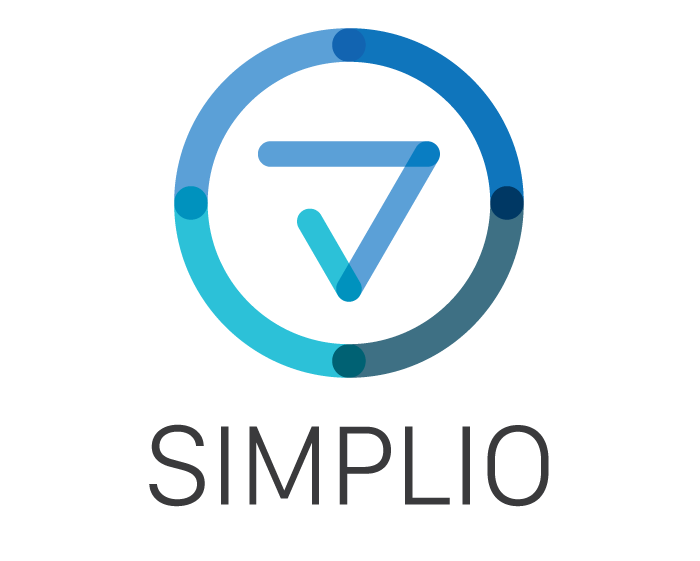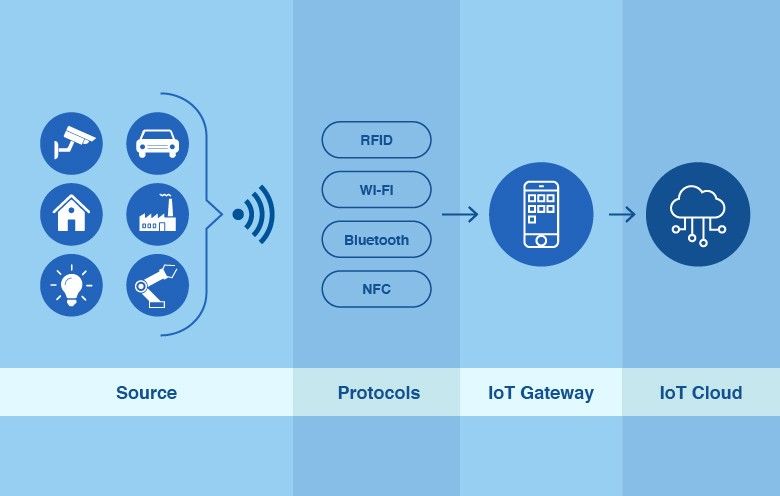An Internet of Things OS is any Operating System specifically designed to work within the constraints that are particular to IoT devices which are typically limited in memory size, processing power, capacity, and built to enable swift data transfer over the Internet.
There are several (mostly Linux-based) Operating Systems that you can use for IoT but they wouldn’t allow you to get the best out of your setup and that’s the reason why IoT-focused distros exist.
Here are the list of top Operating Systems you can use for your Internet of Things projects.
1. Zephyr (Operating System)
Zephyr is a small, scalable, open-source, and real-time operating system (RTOS) for connected devices, that provides modularity which allows developers to optimize the system for a specific use. It supports multiple architectures and offers features like Bluetooth, LoRa, and NFC.
Zephyr is designed to be easy to use and efficient, with a small memory footprint and low power consumption. It also includes a number of features that make it well-suited for IoT devices, such as support for networking, security, and power management.
Some of the key features of Zephyr include:
- Small memory footprint and low power consumption.
- Support for multiple hardware architectures.
- Connectivity support for Wi-Fi, Bluetooth, and Ethernet.
- Security features, such as encryption and authentication.
- Power management features, such as dynamic voltage and frequency scaling.
- A modular design that makes it easy to add new features and drivers.
Zephyr is used in a wide variety of IoT devices, including sensors, actuators, gateways, and wearables. It is also used in some industrial and automotive applications.
2. Ubuntu Core
Ubuntu Core is a robust version of Linux’s most popular distro, Ubuntu, made particularly for large container deployments and Internet of Things devices. It was built by Canonical to use the same kernel, system software, and libraries as Ubuntu but on a much smaller scale, and it is used to power robots, gateways, digital signs, etc.
Ubuntu Core is designed to provide users with a secure embedded Linux for IoT devices. All of its aspects are verified in order to maintain immutable packages and persistent digital signatures. It is also minimal and enterprise-ready.
3. RIOT OS
RIOT is a free, friendly, and open source Operating System designed for working with IoT devices with the aim of implementing all relevant open standards that support secure, durable, and privacy-friendly IoT connections.
RIOT‘s features include a minimum RAM and ROM size of ~1.5kB and ~5kB, full support for C and C++, multi-threading, modularity, and MCU without MMU.
Here are some of the features of RIOT OS:
- Supports a wide range of hardware platforms, including 8-bit, 16-bit, and 32-bit microcontrollers.
- Provides a real-time kernel with guaranteed response times.
- It boasts a minimal memory footprint, ideal for devices with limited resources.
- Is modular, making it easy to add or remove features.
- Provides a uniform API for accessing hardware and services.
- It is open source, allowing for free modification and redistribution.
RIOT OS is a popular choice for developing IoT applications by a wide range of companies and organizations, including Bosch, Siemens, and the European Space Agency.
If you are looking for an OS for your IoT project, RIOT OS is a good option to consider, It is a powerful, versatile, and open-source OS that can be used to develop a wide variety of applications.
4. FreeRTOS
FreeRTOS is an open-source, real-time operating system (RTOS) for microcontrollers, which is a lightweight kernel that offers basic functionality for task management, scheduling, and synchronization.
FreeRTOS is free to use and distribute, and it is supported by a large active community and used by a wide variety of embedded systems, including industrial automation, medical devices, consumer electronics, automotive, networking, smart home devices, and Internet of Things (IoT).
Here are some of the key features of FreeRTOS:
- It is a small and efficient kernel that takes up minimal memory and processing resources.
- It supports multiple tasks that can run concurrently.
- It provides a variety of scheduling algorithms to choose from.
- It provides a variety of synchronization mechanisms to ensure that tasks do not interfere with each other.
- It provides a variety of memory management options, including static and dynamic allocation.
- It has been ported to over 35 microcontroller platforms.
- It provides a variety of security features, such as secure boot and over-the-air updates.
If you are developing an embedded system, FreeRTOS is a good choice for an RTOS. It is reliable, efficient, and easy to use.
5. Mbed OS
Mbed OS is an open-source, real-time operating system (RTOS) designed for embedded systems, specifically targeting Internet of Things (IoT) devices.
Developed by Arm, one of the industry leaders in microprocessor technology, Mbed OS offers a range of features and tools that make it easier for developers to produce efficient, secure, and scalable products.
Here are some of the key features of Mbed OS:
- A lightweight operating system that takes up minimal memory and processing resources. This makes it ideal for resource-constrained IoT devices.
- It is designed to be efficient in terms of power consumption and performance. This is important for IoT devices that need to operate on batteries or other limited power sources.
- Provides a variety of security features to protect IoT devices from attack. This includes secure boot, over-the-air updates, and cryptography.
- Portable to a wide range of Arm Cortex-M microcontrollers. This makes it easy to develop IoT devices that can run on a variety of hardware platforms.
- Has a large and active community of developers and users. This means that there is a lot of support available, and you are more likely to find solutions to problems that you encounter.
If you are developing an IoT device, Mbed OS is a good choice for an operating system, as it is lightweight, efficient, secure, and portable, and it has a large and active community of support.
6. Fuchsia OS
Fuchsia is an open-source capability, real-time operating system created for the Internet of Things devices by Google. Unlike two of Google’s much-loved products, Chrome and Android, which are based on the Linux kernel, Fuchsia OS is based on the Zircon kernel.
It ships with Node.js which enables support for JavaScript and it is expected to be able to run on AMD devices as well as on phones and tablets with the ability to run Android apps.
Want to see Fuschia in action? Check out this demo link.
7. Contiki-NG
Contiki-NG (short for Contiki Next Generation) is an open-source operating system for resource-constrained, networked, Internet of Things (IoT) devices. It serves as the successor to the older Contiki OS and offers enhanced features, stability, and performance.
Designed with tiny devices in mind, Contiki-NG provides multitasking capabilities and a built-in Internet Protocol (IP) suite, making it suitable for a wide range of IoT applications.
Here are some of the key features of Contiki-NG:
- Supports a variety of low-power communication protocols, including 6LoWPAN, IPv6, 6TiSCH, RPL, and CoAP.
- It provides a variety of security features, including secure boot, over-the-air updates, and cryptography.
- Portable to a wide range of hardware platforms, including 8-bit, 16-bit, and 32-bit microcontrollers.
- Designed in a modular way, which makes it easy to add new features and adapt it to different applications.
- Has a large and active community of developers and users, which means that there is a lot of support available.
8. TinyOS
Tiny OS is a free and open-source BSD-based Operating System aimed at low-power wireless devices e.g. devices used in sensor networks, Personal Area Networks, universal computing, smart meters, and smart buildings.
It initially started as a project hosted on Google Code where it was writeable by only selected core developers but it has since 2013, transitioned to GitHub where it is more open to the open-source community and is averaging at least 35,000 downloads per year.
Here are some of the key features of TinyOS:
- It is designed to be lightweight and efficient, taking up minimal memory and processing resources.
- It is based on a component-based architecture, which makes it easy to develop and maintain applications.
- It uses an event-driven programming model, which means that applications are event-driven and do not have to worry about managing the underlying hardware.
- It is designed to be network-aware, making it easy to develop applications that communicate with each other over a network.
- An open-source operating system, which means that it is free to use and modify.
9. BalenaOS
BalenaOS is a Linux-based operating system optimized for running Docker containers on embedded devices. It is based on the Yocto Project, and it uses Docker as its container runtime, which is designed to be lightweight, secure, and easy to use.
Here are some of the key features of BalenaOS:
- Designed to be lightweight and efficient, taking up minimal memory and processing resources.
- It uses Docker as its container runtime, which makes it easy to deploy and manage applications.
- Includes a variety of security features, such as secure boot and over-the-air updates.
- Provides a variety of tools and documentation to help developers get started.
BalenaOS is used by a variety of companies, including Bosch, Intel, and Samsung. It is also used by a number of open-source projects, such as Home Assistant and OpenHAB.
10. MicroPython
MicroPython is a streamlined and optimized version of the Python 3 programming language, incorporating a minimal portion of the Python standard library and designed specifically for microcontrollers and resource-restricted settings.
It is a smaller and more lightweight version of Python that is designed to run on microcontrollers and other embedded systems with limited resources. It is based on the Python programming language, but it has been stripped down to the essentials to make it more efficient and portable.
MicroPython is a good choice for developing applications for embedded systems, such as IoT devices, robotics, educational projects and prototypes..
11. Windows for IoT
Windows for IoT represents Microsoft’s endeavor to carve out a place in the burgeoning Internet of Things (IoT) landscape. Specifically tailored for IoT devices, this platform offers developers and businesses a means to create smart, interconnected solutions with a familiar Windows framework.
The platform is split mainly into two primary editions Windows 10 IoT Core and Windows 10 IoT Enterprise and can be integrated seamlessly with Azure IoT Suite, Microsoft’s cloud solution for IoT, providing an end-to-end solution for businesses.
With the massive growth of IoT, Microsoft’s Windows for IoT is positioning itself as a reliable, scalable, and efficient platform, bridging the gap between everyday devices and the power of smart, interconnected technology.
12. OpenWrt
OpenWrt is an open-source firmware project aimed at embedded devices, particularly routers. Unlike many factory-default firmware that offer limited customization and functionality.
Originating from a firmware created for the Linksys WRT54G series in 2004, OpenWrt has evolved to support a vast array of hardware from various manufacturers. Its modular design enables users to personalize their device’s functionalities by choosing from a vast collection of available packages tailored for different needs.
One standout feature of OpenWrt is its package management system that allows for easy installation of software and extensions, providing enhanced functionalities beyond the capabilities of standard firmware.
13. Embedded Linux
Embedded Linux is a term used to describe the latest generation of embedded Linux operating systems, which is based on the Ubuntu Core distribution and features a number of improvements over previous versions, including:
- It is designed to be more lightweight and efficient, making it ideal for resource-constrained devices.
- Built on a modular architecture, which makes it easier to customize and update the operating system.
- Built on a secure foundation, with features such as AppArmor and Seccomp to protect devices from cyberattacks.
- Designed to be cloud-native, making it easy to develop, deploy, and manage applications on embedded devices.
Conclusion
Choosing the right IoT operating system is crucial in ensuring the functionality, efficiency, and security of connected devices. Factors like memory constraints, required connectivity protocols, and scalability need to be considered.
Do you already use any of the above-mentioned Operating Systems for your IoT projects? Or are you familiar with recommendable ones not on the list? Drop your comments in the discussion section.
https://www.geeksmint.com/operating-systems-for-the-internet-of-things/


